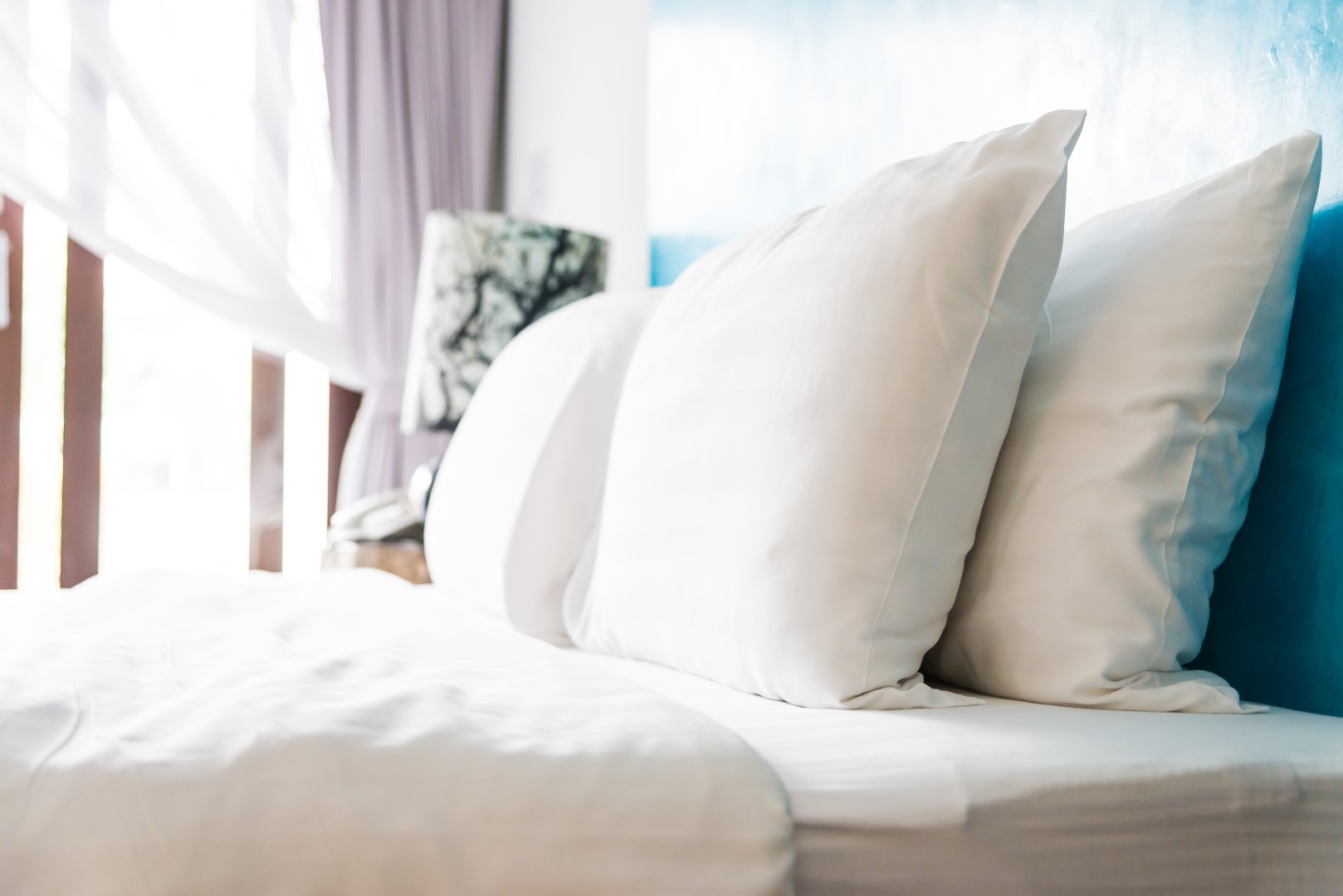
Shopping for pillows is just like shopping for mattresses: you’ve got to try them out before taking them home. So go ahead – don’t be shy – and lie on each pillow like you would at home. Try out different positions, fold it, mould it, punch it, twist it, scrunch it…anything that you might normally do. Trying the pillow out in the store is the only way that you’ll know it’s the right one for you.
Your Pillow: Dream or Nightmare?
Do you dream of the “perfect’ pillow? Or is your pillow keeping you from dreaming at all? Sleep won’t come easy if you aren’t using the right pillow, so be sure to treat your head to the support it deserves!
A good pillow should comfortably support the natural curve of your spine, allowing muscles in your back, neck, and shoulders to relax so that blood flow is optimised during your slumber. While most of us switch between sleeping on our side, stomach, and back throughout the night, we do tend to favour one of these positions for a longer period. In general, side sleepers need a thicker pillow for better alignment; back sleepers require a thinner pillow to avoid unnaturally forward head posture; and stomach sleepers can opt for a flat pillow or none at all, or perhaps a pillow placed under the chest.
Pillow Talk – A Buyer’s Guide
When you consider how important a good night’s sleep is to your overall health, you want to make sure that you set yourself up with the “right” pillow. Here’s a rundown of popular pillow types and how they can take your nightly forty winks up a notch.
A long-standing favourite for pillows, cotton is a soft, breathable, and attractive option. It offers firm support with a soft feel, holds its shape and loft reasonably well, and is easily maintained. It offers decent breathability and absorbency, usually at an affordable price. However, cotton may be too firm for your sleeping comfort, can be quick to collapse, become lumpy, or collect on one side of the pillow; cotton retains moisture, making it susceptible to dust mites.
Latex provides gentle but firm support for your head, neck, and shoulders as well as a host of health benefits. It is:
- Naturally antimicrobial – 300% more resistant than other foams
- Naturally hypoallergenic – Fewer dust mites equal less chance of an allergic reaction
- Naturally breathable – Air and moisture are constantly recycled through the open cell structure
In addition, latex holds its shape, is durable, and won’t clump or develop hollow spots. When new, latex may give off an odour, but it does go away. Some find latex pillows too thick / lofty, and they can be expensive.
Wool provides exceptional ventilation as it naturally draws moisture from your skin through the pillow and out to the environment, leaving you with a fresh, dry sleep surface. Wool pillows tend to become firmer with use, but the feel can be customized with a latex or memory foam core. What’s more, wool is
- Naturally hypoallergenic and antimicrobial – fewer dust mites and allergens equals a healthier sleeping environment
- Naturally breathable –constant air flow promotes more comfortable sleep
Be aware – wool pillows can cause a reaction for those with an allergy to lanolin, a natural oil found in wool fibre.
Down pillows are usually soft, cuddly, and malleable. Lightweight and durable, down offers decent ventilation, however, down pillows can lack adequate loft and support, can be expensive, should be fluffed/shaken regularly, and may lose feathers over time.
Memory Foam pillows offer a good compromise between softness and support. They provide contoured support for optimal comfort and pain relief, contents won't clump or shift, and they are easy to care for. Like latex, however, memory foam may emit a certain odour when new, may not provide enough loft or support for some while being too firm for others, and is not ideal for regulating temperature (may retain heat).
Polyester pillows are generally inexpensive, reasonably durable, and can be popped into the washing machine for easy cleaning. Disadvantages of polyester include possible clumping or shifting of pillow contents, hollow spots, and ineffective contouring for head and neck.